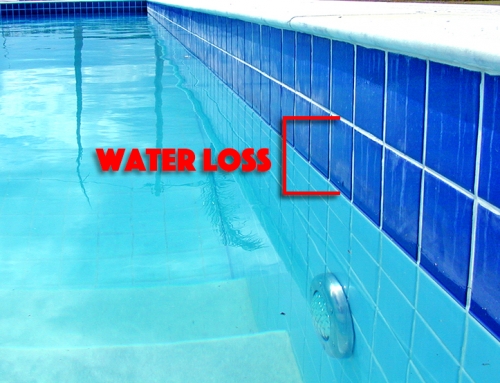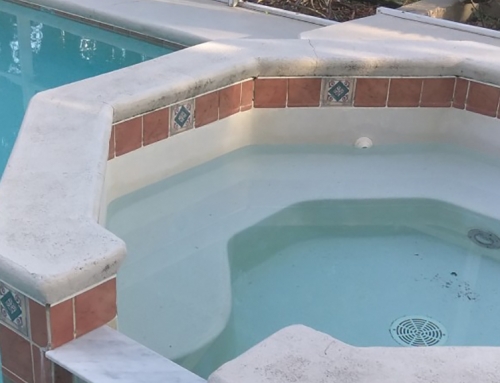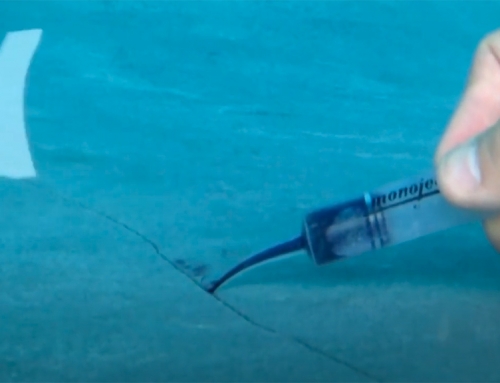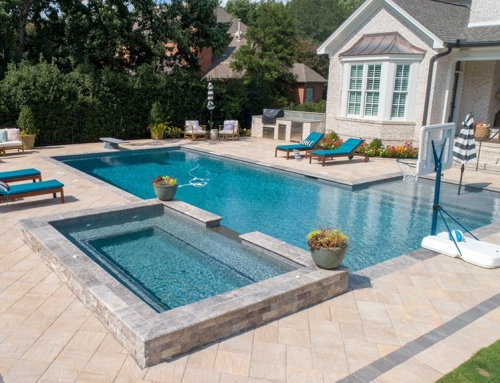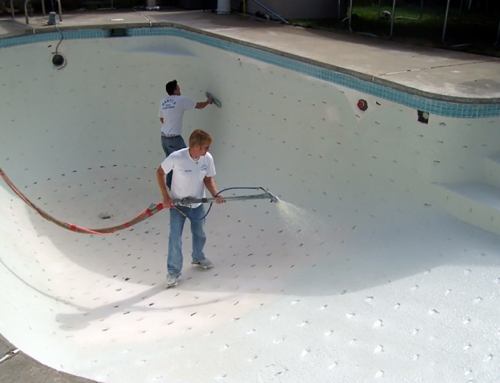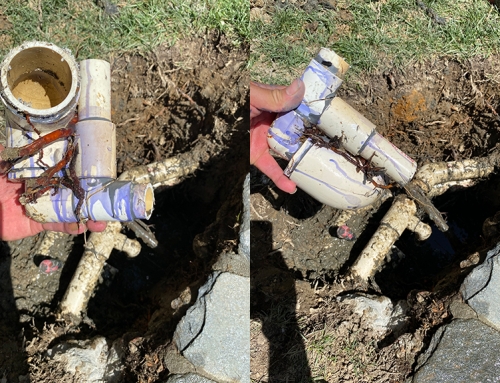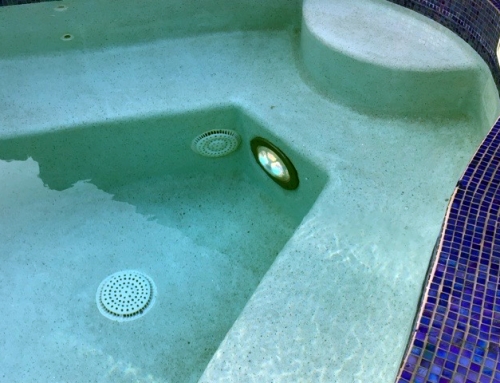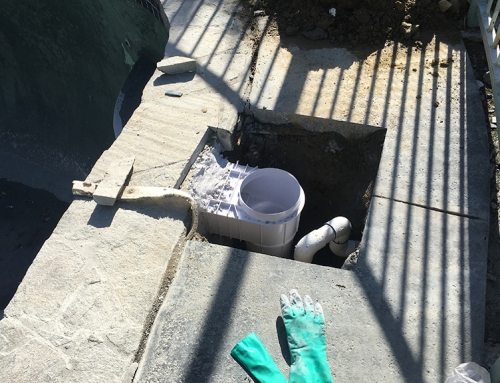When it comes to leaking pools, it’s easy to make an assumption that water loss is due to something a homeowner understands. Speculating that something you’ve seen, or heard from a friend in a similar situation is easy, but it’s not correct. There are multiple layers of equipment and construction that have elements you simply might not be familiar with. Don’t speculate on what’s causing a leak – hire a qualified leak detection professional to get precise and accurate reasons why your pool is losing water.
Pool shells have the potential to show leaks in areas due to how they were constructed. When a concrete pool is installed, there are multiple areas where solid concrete butts up to other sections of solid concrete. These are referred to as cold joints.
A pool is typically shot to a certain height while the landscape around the pool isn’t fully laid in. The bowl shape of the pool is “shot” to create a solid structure, typically created with an internal mesh of re-bar to hold the pool’s shape. The top area of the pool wall, the Bond Beam, is poured afterward using board forms to bring the height of the pool shell up to match the landscape surrounding the pool. Where the new pour and the “shot” pool meet is called a cold joint. This area, with time and shifting ground, can reveal a separation and ultimately, cause water to escape between the two surfaces. This area in the pool is most often behind a tile line and isn’t visible to the naked eye. While dye testing may reveal areas where water is drawn into the separation, using highly sensitive listening equipment inside of a full pool will ultimately identify the precise area where water is escaping.
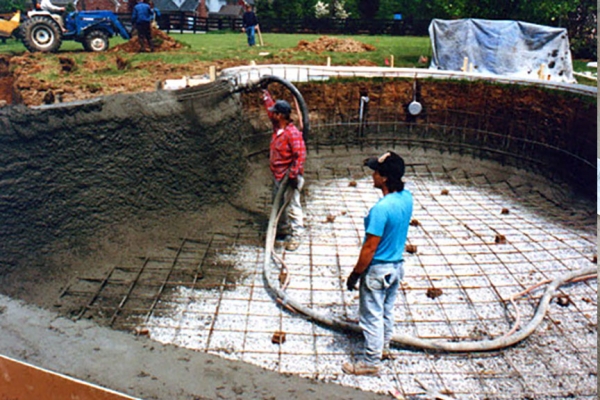
Shooting a Pool Shell
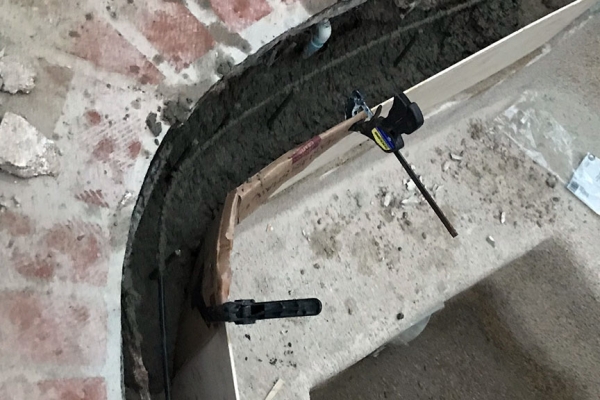
Using Board Forms To Pour The Bond Beam
There are multiple places where plastics, pipes, fittings and drains protrude through the pool shell. These areas are specifically designed to allow water to transfer through pumps, heaters and cleaning systems. Each of these plastics are set into the concrete and sealed tightly to avoid leaks, but with time, these areas can also fail. A qualified leak detection professional can identify if any or all of the areas are showing signs of water leaking through. We check these areas first using hydrophones.
Homeowners sometimes see a deck beginning to separate from its original placement, pulling away from the pool. There may also be signs of damage around skimmer throats or maybe fittings appear broken. While it is important to maintain fittings, partially because broken plastic can cause bodily harm, but mostly because if a fitting is broken along its edge, it may be showing that the area where it was formerly sealed could also have failure. Listening to these areas with hydrophones can detect water escaping through even the smallest separation.
Some pool owners see delamination and signs of cracking in the surface of their pool shell. This may seem like an obvious sign of a leak in need of immediate repair. Often, crack repair is costly, but when done properly, it’s a one time repair that can permanently fix structural cracking. It is important, however, to listen along these suspect areas for water leaks before just diving into the cost of repair. Some of these areas that show a potential for leaking are just cosmetic and not something to be immediately concerned with. A professional leak detection technician can deliver results that make that decision for you.
We often hear from a customer who has talked with a friend about their water loss. Mis-information is easily assumed when a homeowner doesn’t understand all the facets of pool design. Where plumbing connects the pool to the equipment and runs under soil or concrete, it’s easy to speculate that a leak is there because you can’t see anything causing the leak up top. While it may be true, leaks do occur in plumbing lines when pipes fracture or separate, this is only one of the multitude of reasons a pool is losing water. Inside the equipment, a bad check valve could be causing the pool to continue running or in some cases, not filling the pool at all, even when it is simply maintaining evaporation loss. Autofill floats are easy targets for failure, but knowing why they aren’t functioning may not be as easy as simply looking at it. A qualified leak detection technician will cover all these aspects.
Some pool guys use bucket tests and awkward leak analyzers that do nothing to identify where a pool is leaking. There are many ways to tell if a pool is losing water – most often, you simply see the level is going down. Finding where the leak is and addressing the precise reason why water is escaping the pool takes more than bucket testing. LeakTronics has created accurate listening equipment and testing methods that find exactly where water is leaking, and at CalTech, we can provide thorough testing and offer the best methods of repair to ensure you never deal with that water loss again.
In short, don’t make assumptions that you know why a pool is leaking. A pool can be expensive, take the right steps to make sure you know what needs repair, and the best methods to get the job done so you can enjoy your pool for years to come, without costly water loss. Random speculation is more costly that a leak detection because making band-aid repairs on pools will ultimately mean you’ll be making proper repairs in a short amount of time. Don’t waste money, time or effort guessing why a pool is losing water – call CalTech today and get a proper leak detection on your pool.

